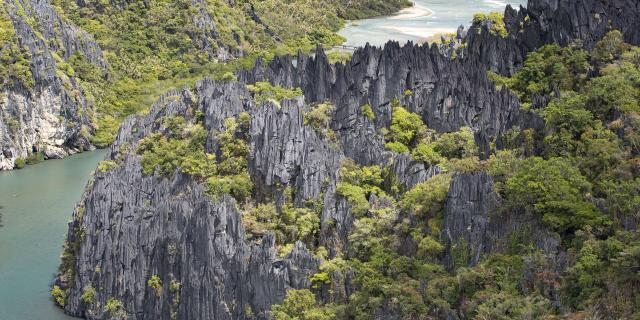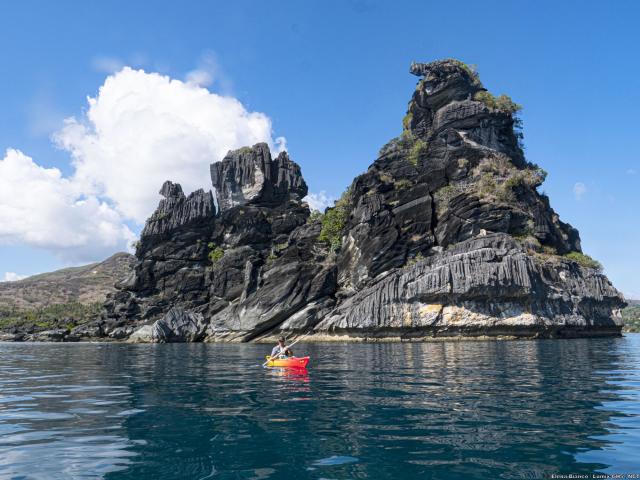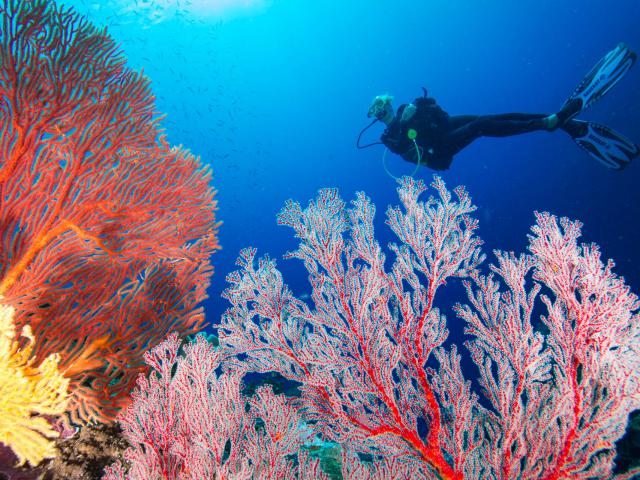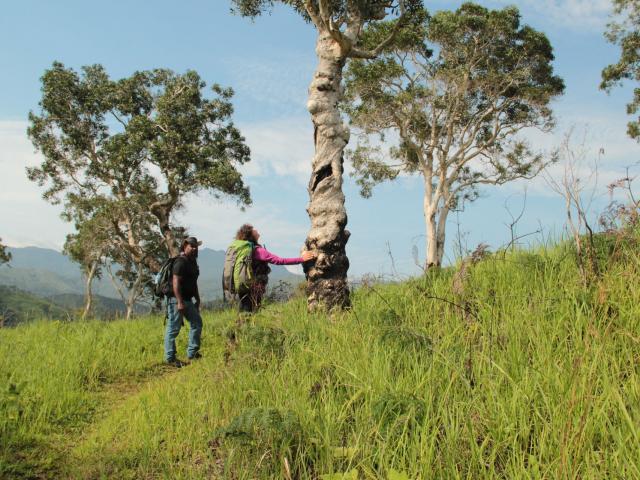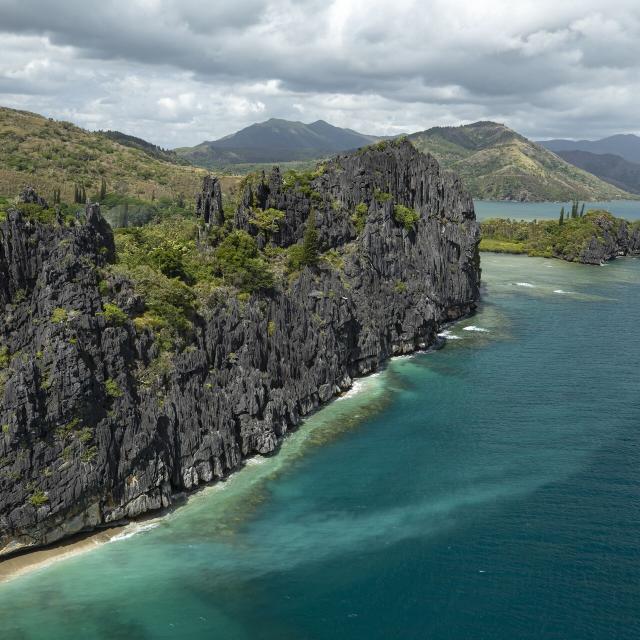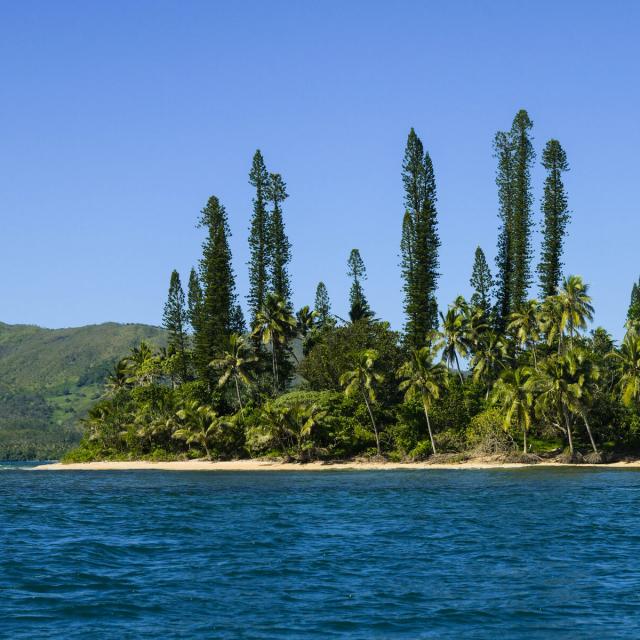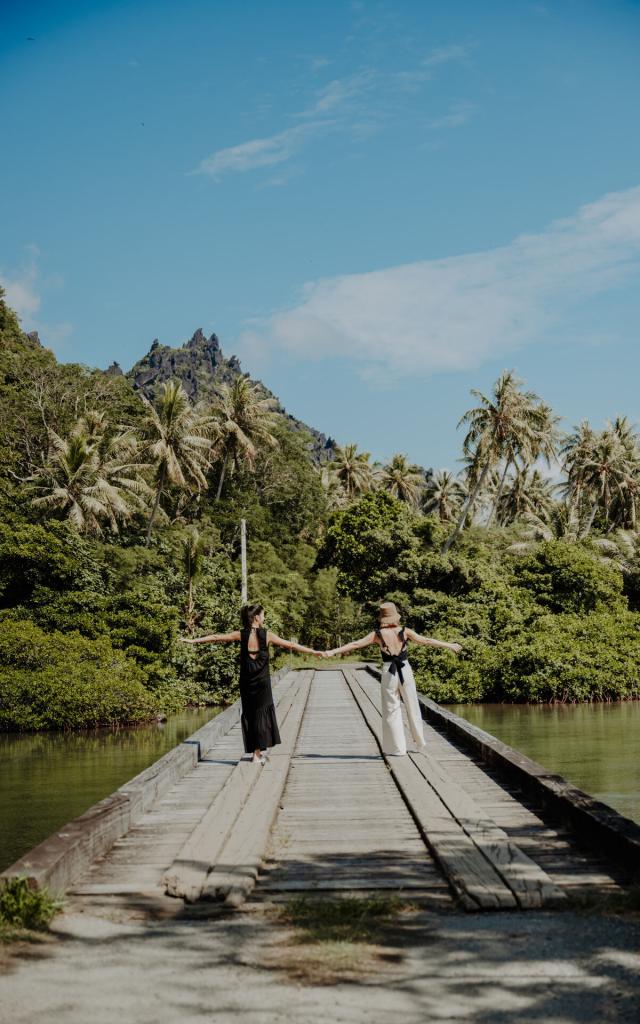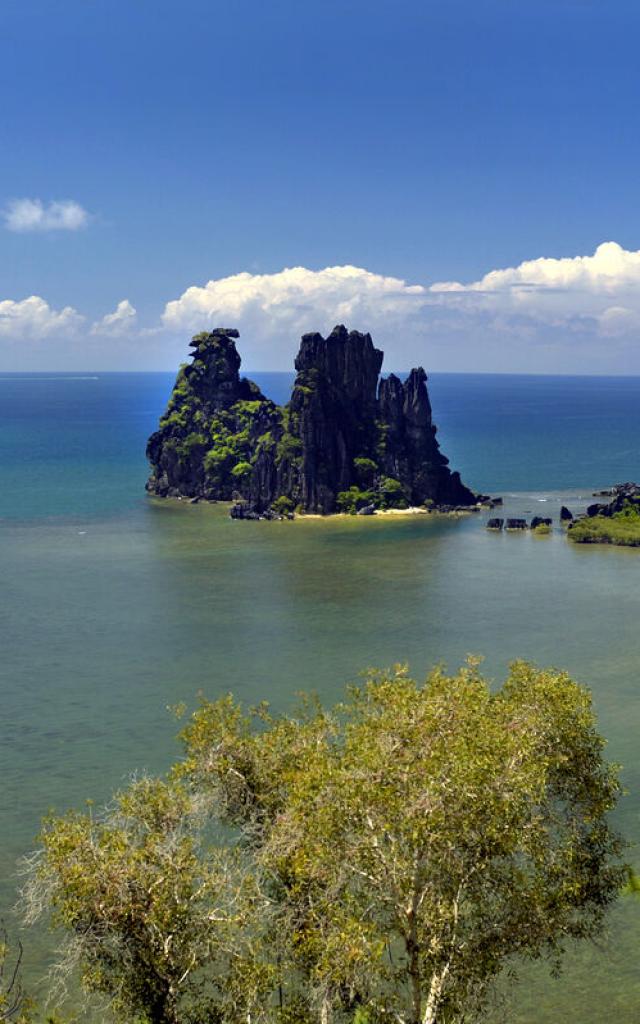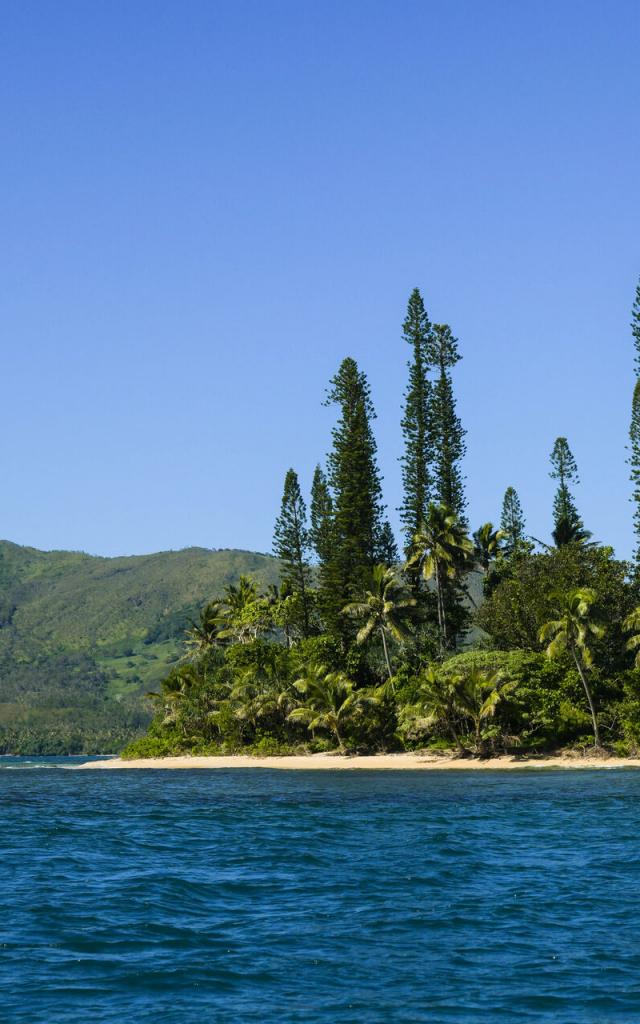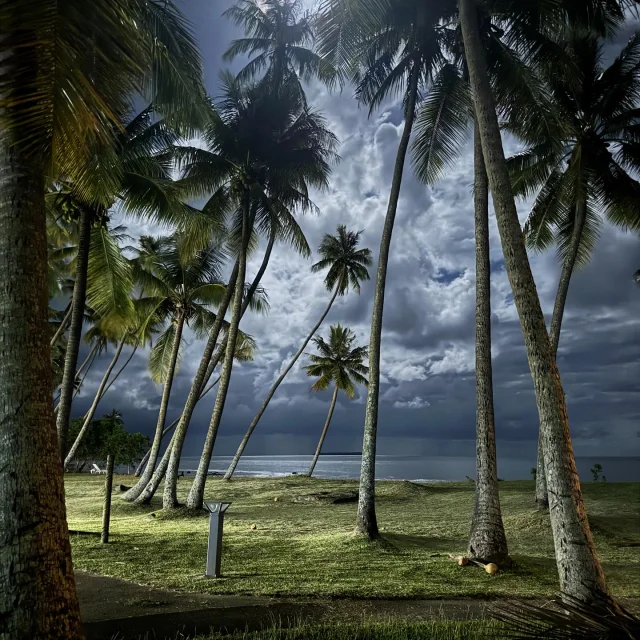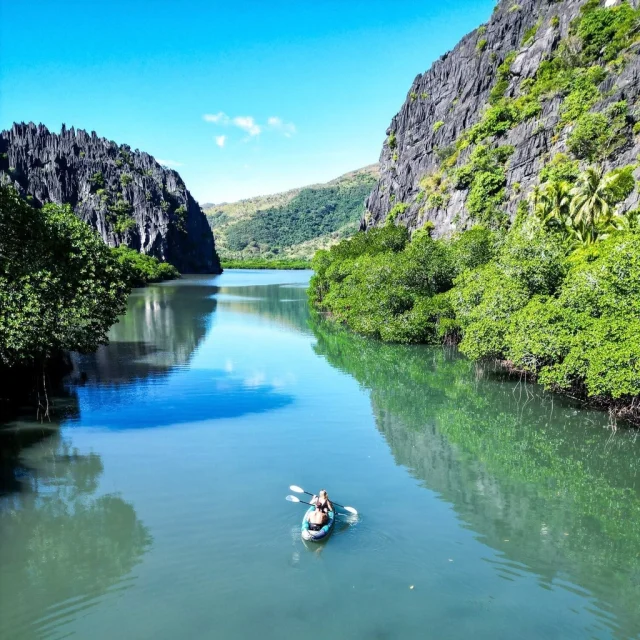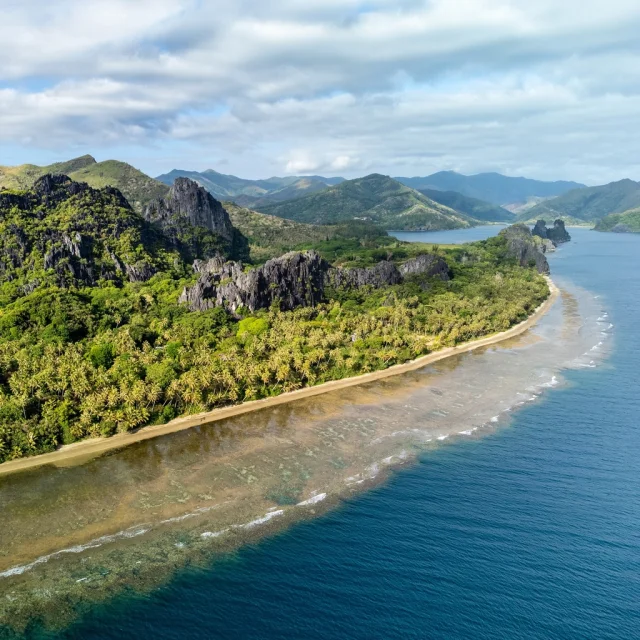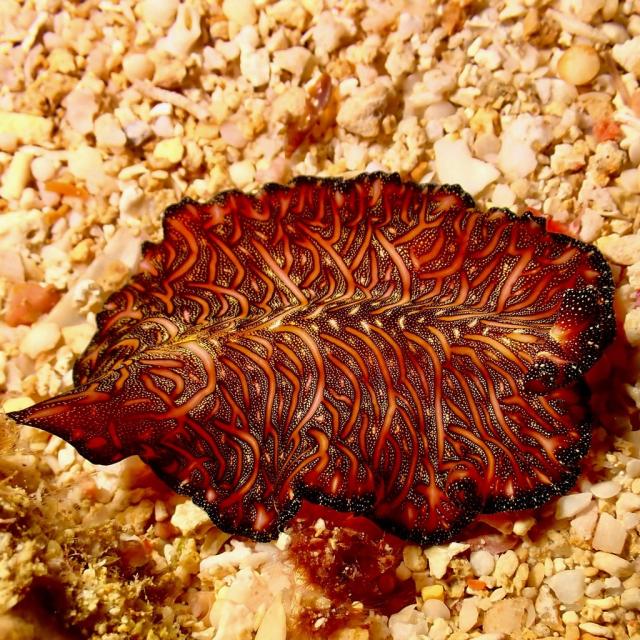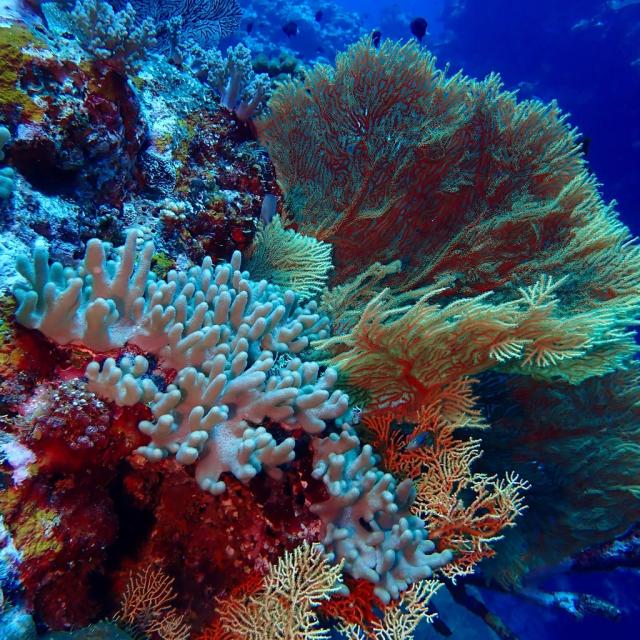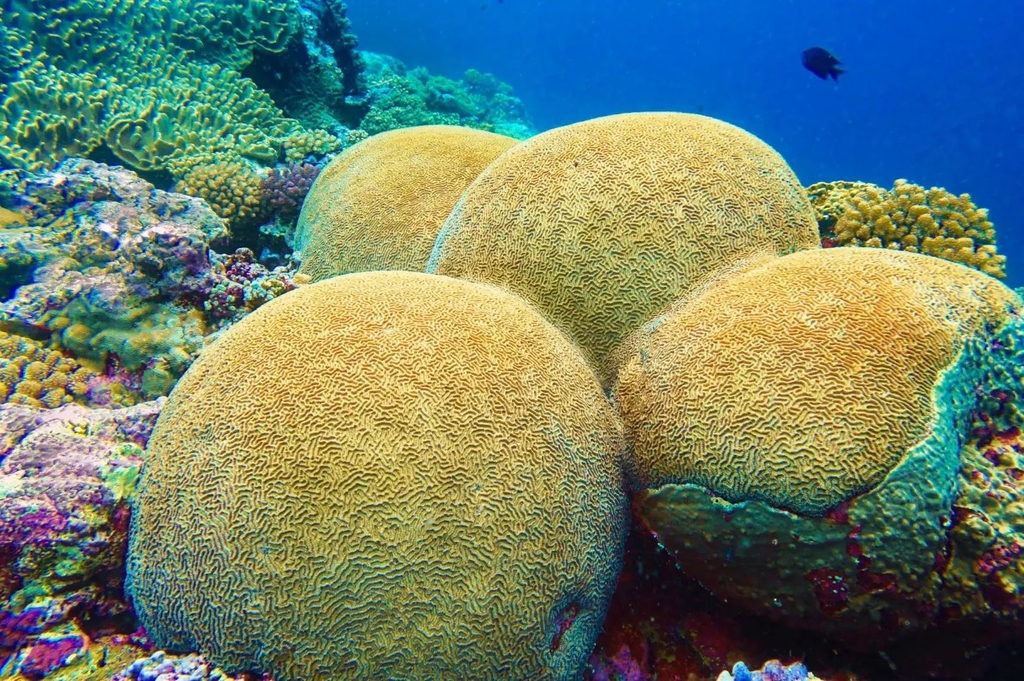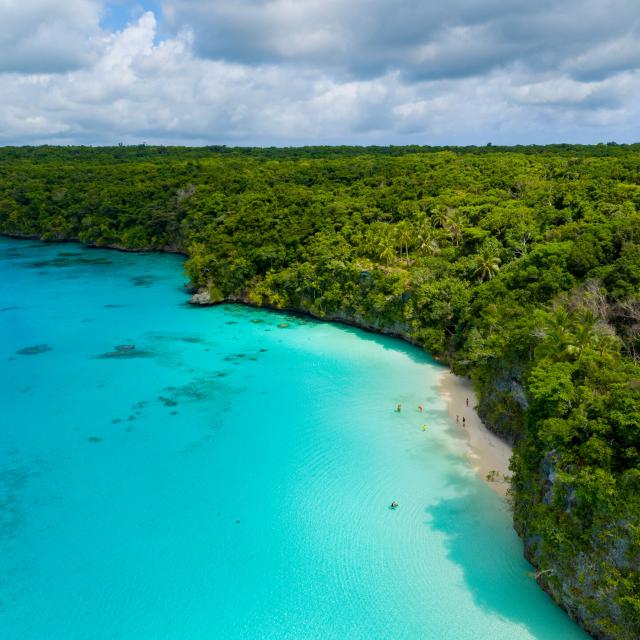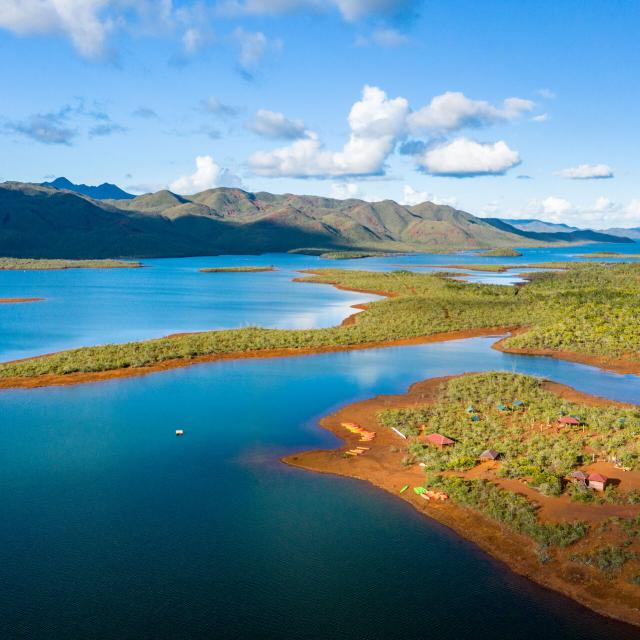To the east of New Caledonia’s central mountain range, tropical forests and mining areas dominate the landscape. This region is an ideal destination for immersive tribal getaways, mountain hikes, and refreshing experiences by rivers and waterfalls. The East Coast also boasts one of Grande Terre’s most picturesque coastal routes, including a charming ferry crossing that is still in operation.
To reach the East Coast from Nouméa, the best route is to head north towards Koné (3 hours and 20 minutes), then cross the central mountain range on the Koné-Tiwaka road. This winding and scenic road takes approximately one hour, meandering through rainforests and dry forests, offering numerous splendid viewpoints. From there, it’s a 30-minute drive to Poindimié or a one-hour drive to Hienghène. Although bus travel is possible, it’s a lengthy journey due to frequent stops. Hence, we recommend renting a car for convenience.
As you venture away from the capital towards the East Coast and its islands, you’ll immerse yourself in Kanak culture, where traditions remain deeply rooted. Daily life in these regions revolves around activities like harvesting and fishing, which also shape local festivals and fairs. From the Avocado Festival to the Lagoon Festival and the Taro Festival, these celebrations provide a glimpse into New Caledonian customs. You can experience traditional tribal accommodation, participate in meal preparation, engage in weaving, and share delightful moments of conviviality.
